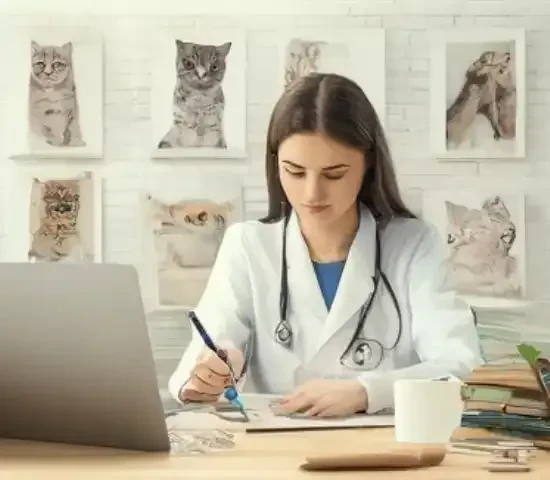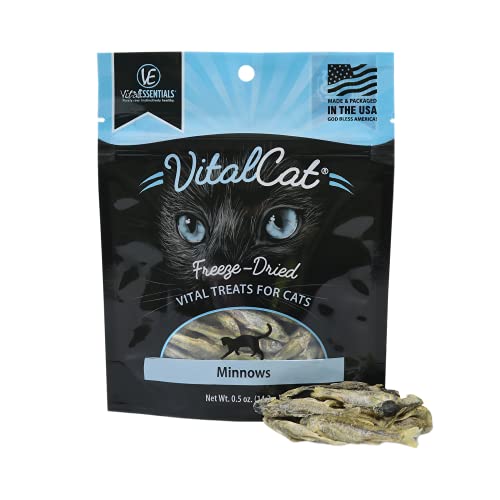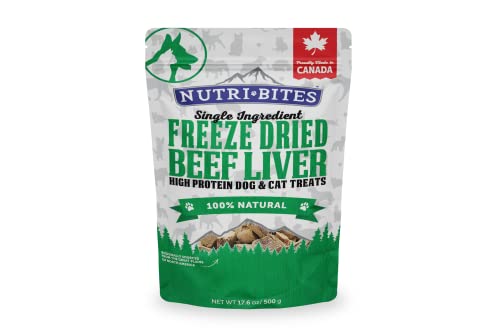There's nothing quite like the soft purr of a cat nestled in your lap or the playful pounce of a feline chasing a sunbeam across the floor. Cats bring immeasurable joy into our lives, becoming cherished members of our families. As devoted cat owners, our greatest wish is for our feline companions to live long, happy, and healthy lives. While cats often project an image of aloof independence, they are just as susceptible to health issues as any other pet, or indeed, as we are ourselves. Being informed about the common health challenges that cats face is one of the most loving and responsible things we can do for them. It empowers us to be proactive, to recognize early warning signs, and to ensure they receive the best possible care throughout their lives.
This article aims to shed light on some of the most prevalent health problems encountered in cats. Understanding these conditions is not about inducing worry, but about equipping you with the knowledge to be a better guardian for your feline friend. Early detection is often crucial in managing or even preventing many feline illnesses. By being vigilant and informed, you can significantly contribute to your cat's wellbeing and longevity, ensuring you have many more years of purrs and cuddles ahead. Remember, a healthy cat is a happy cat, and a happy cat makes for an even happier home. The journey of cat ownership is filled with love and companionship, and by being informed about their health needs, we can strengthen that bond and ensure they thrive under our care.
One of the most common areas of concern for cat owners is their cat's urinary tract. Feline Lower Urinary Tract Disease, often abbreviated to FLUTD, is a broad term encompassing a variety of conditions that affect the bladder and urethra. Cystitis, inflammation of the bladder, is a frequent component of FLUTD. This condition can manifest in a number of distressing symptoms for your cat. You might notice your cat straining to urinate, making frequent trips to the litter box but only producing small amounts, if anything at all. Blood in the urine is another alarming sign, easily visible as pink or red tinges in the litter box. Perhaps one of the most frustrating and concerning symptoms for owners is inappropriate urination, where a normally well-trained cat starts urinating outside the litter box, often on cool, smooth surfaces like tile or bathtubs. Several factors can contribute to FLUTD, including diet, stress, and obesity. A diet that is too dry or lacks sufficient moisture can contribute to concentrated urine, irritating the bladder lining. Stress in a cat's environment, perhaps from changes in the household, new pets, or even just perceived threats outside, can also play a significant role. Obese cats are also at increased risk.
Closely related to FLUTD are urinary crystals and stones. These form when minerals in the urine crystallize and clump together. These crystals or stones can irritate the urinary tract and, more seriously, can obstruct the flow of urine. The symptoms of urinary crystals and stones can often overlap with those of FLUTD, including straining, frequent urination, and blood in the urine. However, a urinary blockage is a true emergency, especially in male cats, due to their narrower urethra. If a cat is completely unable to urinate, toxins will build up in the body rapidly, and the condition can become life-threatening in a matter of hours. If you suspect your cat might be blocked – exhibiting extreme straining, vocalizing in pain, or producing no urine at all – immediate veterinary attention is absolutely crucial.
Chronic Kidney Disease, or CKD, also known as renal failure, is another significant urinary tract issue, particularly prevalent in older cats. CKD is a progressive condition where the kidneys gradually lose their ability to function effectively. The kidneys play a vital role in filtering waste products from the blood and maintaining fluid balance. As kidney function declines, waste products accumulate, and the body struggles to regulate fluids. One of the earliest and most noticeable symptoms of CKD is increased thirst and urination. You might find yourself filling the water bowl more often, and the litter box might become significantly wetter than usual. Other symptoms include weight loss, despite possibly eating normally or even more, lethargy, vomiting, and a decreased appetite. While CKD is not curable, it can be effectively managed to slow its progression and improve a cat's quality of life. Management strategies often involve a special kidney-friendly diet that is lower in protein and phosphorus, along with medications to manage symptoms and support kidney function.
Moving beyond urinary issues, endocrine disorders, which involve hormonal imbalances, are also commonly seen in cats. Hyperthyroidism is one such disorder, characterized by an overactive thyroid gland. The thyroid gland produces hormones that regulate metabolism. In hyperthyroidism, the thyroid gland produces excessive amounts of these hormones, leading to a revved-up metabolism. Paradoxically, one of the most striking symptoms is weight loss despite an increased appetite. The cat may seem constantly hungry and eat voraciously, yet they continue to lose weight. Other signs include hyperactivity or restlessness, increased thirst and urination, vomiting, and diarrhea. Fortunately, hyperthyroidism is typically very treatable. Treatment options include daily medication to regulate thyroid hormone production, radioactive iodine therapy to destroy the overactive thyroid tissue, or surgical removal of the affected thyroid gland.
Diabetes Mellitus, another endocrine disorder, is also seen in cats, much like in humans. Feline diabetes occurs when the body either doesn't produce enough insulin or becomes resistant to the insulin it does produce. Insulin is essential for regulating blood sugar levels, allowing glucose to enter cells for energy. Without sufficient or effective insulin, blood sugar levels become dangerously high. Similar to hyperthyroidism, increased thirst and urination are prominent symptoms of diabetes in cats. You might also observe an increased appetite alongside weight loss. Lethargy and a general lack of energy are common, and in advanced cases, a sweet, fruity odor may be noticeable on the cat's breath due to the breakdown of fats for energy. Diabetes in cats often requires management with insulin injections, typically given once or twice daily. Diet also plays a crucial role, with many diabetic cats benefiting from a low-carbohydrate, high-protein diet.
Gastrointestinal issues, affecting the digestive system, are another frequent reason cat owners seek veterinary care. Vomiting and diarrhea are incredibly common in cats, and while occasional episodes can be minor and self-limiting, persistent or severe vomiting and diarrhea can indicate underlying problems. There are countless potential causes for these symptoms, ranging from simple dietary indiscretion (eating something they shouldn't, like garbage or spoiled food) to food sensitivities or allergies, parasitic infections, bacterial or viral infections, and inflammatory bowel disease (IBD). While a single episode of vomiting after eating too quickly might not be cause for alarm, frequent vomiting, diarrhea that lasts for more than a day or two, bloody vomit or stool, or lethargy accompanying these symptoms are all reasons to seek veterinary attention.
Hairballs are a classic feline gastrointestinal problem, albeit often more of a nuisance than a serious health threat. As cats groom themselves, they ingest loose fur. While some fur passes through the digestive system, some can accumulate in the stomach and form hairballs. The common symptom of hairballs is a cat coughing or hacking, often accompanied by retching,
Inflammatory Bowel Disease (IBD) is a more complex and chronic gastrointestinal condition in cats. IBD involves chronic inflammation of the digestive tract lining. This inflammation disrupts normal digestion and absorption of nutrients. Symptoms of IBD can be varied but often include chronic or intermittent vomiting and diarrhea, weight loss, decreased appetite, and abdominal pain, which may manifest as reluctance to be touched around the abdomen or a hunched posture. Diagnosing IBD often requires ruling out other potential causes of gastrointestinal upset and may involve biopsies of the intestinal lining. Management of IBD typically involves a combination of dietary changes, often to a hypoallergenic or easily digestible diet, and medications to reduce inflammation and manage symptoms.
Dental disease is exceptionally common in cats and often overlooked until it becomes advanced and painful. Periodontal disease, encompassing gingivitis and periodontitis, is the most prevalent dental issue. It starts with plaque buildup on the teeth. If plaque is not removed, it hardens into tartar. Tartar accumulates below the gum line, irritating and inflaming the gums, leading to gingivitis. If gingivitis is left untreated, it can progress to periodontitis, where the inflammation extends deeper, damaging the tissues and bone that support the teeth. The symptoms of periodontal disease can range from subtle to obvious. Bad breath is often one of the first signs owners notice. Red and swollen gums, particularly along the gum line, are another indicator. As the disease progresses, cats may experience difficulty eating, drooling, and pawing at their face in discomfort. Preventative dental care is paramount and includes regular tooth brushing, dental diets formulated to reduce plaque and tartar, and professional veterinary dental cleanings under anesthesia.
Tooth resorption is another painful dental condition specific to cats. In tooth resorption, the body's own cells, for reasons not fully understood, start to break down the structure of the teeth. This erosion process can occur at the crown or root of the tooth and can be incredibly painful. Symptoms of tooth resorption can be subtle, especially in early stages. Cats may show subtle signs of pain, such as reluctance to eat dry food, chewing only on one side of the mouth, or decreased grooming. More overt signs include drooling, chattering teeth, and obvious pain when the mouth is touched. Treatment for tooth resorption usually involves extraction of the affected tooth or teeth, as the resorptive process is progressive and ultimately destroys the tooth structure.
Upper Respiratory Infections, commonly referred to as URIs or "cat flu," are contagious infections of the upper respiratory tract. These infections are typically caused by viruses, such as Feline Herpesvirus and Feline Calicivirus, or bacteria. URIs are particularly common in kittens and cats in multi-cat environments, like shelters or catteries, due to their contagious nature. Symptoms of URIs include sneezing, coughing, nasal discharge, eye discharge (which can range from clear and watery to thick and pus-like), lethargy, and decreased appetite. While URIs are usually self-limiting in healthy adult cats, meaning they resolve on their own with supportive care, they can be more serious, particularly in kittens, older cats, or cats with weakened immune systems. Supportive care includes ensuring the cat is eating and drinking, keeping their eyes and nose clean of discharge, and providing a warm and comfortable environment. In some cases, particularly with bacterial secondary infections, antibiotics may be needed, and in severe cases, hospitalization and supportive care may be required.
Parasites, both internal and external, are another common health concern for cats. Fleas are perhaps the most common external parasite. These tiny, wingless insects feed on blood and can cause intense itching and scratching, leading to skin irritation, hair loss, and even secondary skin infections. Fleas are not just a nuisance; they can also transmit diseases and, in severe infestations, can cause anemia, especially in kittens. Fortunately, there are numerous effective flea prevention methods available, including topical treatments applied to the skin, oral medications, and flea collars.
Internal parasites, or worms, are also prevalent in cats. Common types include roundworms, tapeworms, and hookworms. These parasites live in the intestines and other organs, feeding off the cat and potentially causing a range of health problems. Symptoms of worm infestations can vary depending on the type and severity of the infestation. Sometimes, worms or segments of worms can be visible in the cat's feces or vomit. Other symptoms may include weight loss, despite a normal or increased appetite, vomiting, diarrhea, a pot-bellied appearance in kittens, and a dull coat. Deworming medications are readily available and effective at eliminating most common intestinal worms. Regular deworming, particularly for kittens and outdoor cats, is an important part of preventative healthcare.
Beyond these very common problems, there are other health issues that, while perhaps less frequent, are still important to be aware of. Arthritis, or osteoarthritis, is a degenerative joint condition, especially common in older cats. It causes joint pain and stiffness, which can manifest as decreased activity, reluctance to jump or climb, stiffness after resting, and changes in grooming habits. Heart disease, specifically cardiomyopathy, a disease of the heart muscle, can also occur in cats. Symptoms can be subtle and may include lethargy, breathing difficulties, and sometimes sudden collapse. Cancer, unfortunately, is also a concern in cats, particularly as they age. Various types of cancer can affect cats, and early detection is crucial for treatment success.
Prevention is always better than cure, and there are many proactive steps you can take to support your cat's health and minimize their risk of developing these common health problems. A foundation of good health starts with a high-quality diet. Choose a cat food that is species-appropriate, meaning it is high in protein, moderate in fat, and low in carbohydrates, mirroring a cat's natural prey diet. Ensure the food is balanced and complete, providing all the necessary nutrients. Fresh, clean water should always be readily available to encourage hydration, which is crucial for urinary tract health and kidney function.
Regular veterinary check-ups are non-negotiable for preventative care. Annual wellness exams are recommended for adult cats, and more frequent check-ups, perhaps every six months, are advisable for senior cats or cats with known health conditions. These exams allow your veterinarian to detect early signs of illness, perform necessary vaccinations to protect against contagious diseases, and recommend appropriate parasite prevention strategies. Dental care at home, including regular tooth brushing, is essential to prevent periodontal disease. Dental diets and treats can also contribute to dental health. Professional veterinary dental cleanings under anesthesia are often necessary periodically to remove tartar buildup below the gum line.
Creating a stress-reduced environment is also beneficial. Cats are sensitive creatures, and stress can contribute to various health issues, particularly urinary problems. Provide a safe, predictable, and enriching environment with scratching posts, climbing opportunities, toys, and quiet resting places. Weight management is also key. Obesity is a significant risk factor for diabetes, arthritis, and other health problems. Feed your cat appropriate portions, engage them in play to encourage activity, and monitor their weight to prevent them from becoming overweight. Finally, and perhaps most importantly, be observant. Get to know your cat's normal behavior, appetite, litter box habits, and energy levels. Any subtle changes in these areas can be early warning signs of a developing health problem.
Knowing when to seek veterinary care is crucial. While this article provides general information, it is never a substitute for professional veterinary advice. There are certain "red flag" symptoms that warrant immediate veterinary attention. Difficulty breathing or rapid breathing is an emergency. Straining to urinate or defecate, especially if unproductive, also requires urgent care. Frequent or severe vomiting or diarrhea, lethargy or collapse, a sudden change in appetite or thirst, obvious pain or discomfort, seizures or tremors, and any significant wounds or injuries are all reasons to contact your veterinarian promptly. And remember the golden rule: when in doubt, always call your vet. It's always better to err on the side of caution when it comes to your cat's health.
In conclusion, being informed about common health problems in cats is a powerful tool in responsible cat ownership. It empowers you to be proactive in your cat's care, to recognize early signs of illness, and to work in partnership with your veterinarian to ensure your feline companion enjoys a long and healthy life. Early detection, preventative care, and a loving and attentive home are the cornerstones of feline wellbeing. By prioritizing these aspects, you are not only safeguarding your cat's health but also strengthening the beautiful and rewarding bond you share, ensuring many more years of purrs, playfulness, and cherished companionship. Remember, a healthy cat is a happy member of the family, and that happiness is the greatest reward for any cat owner.







